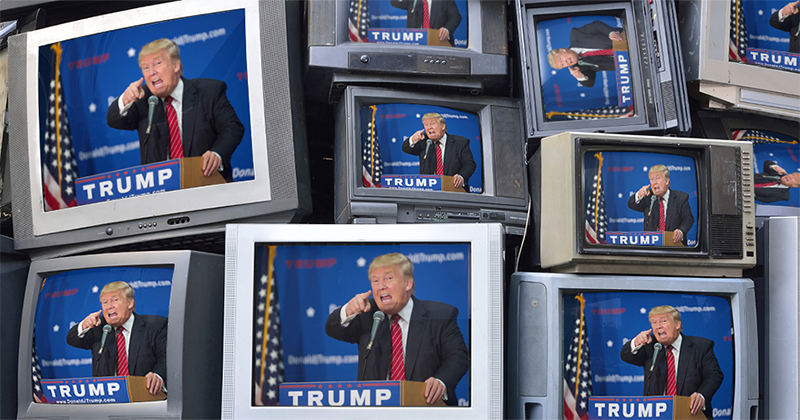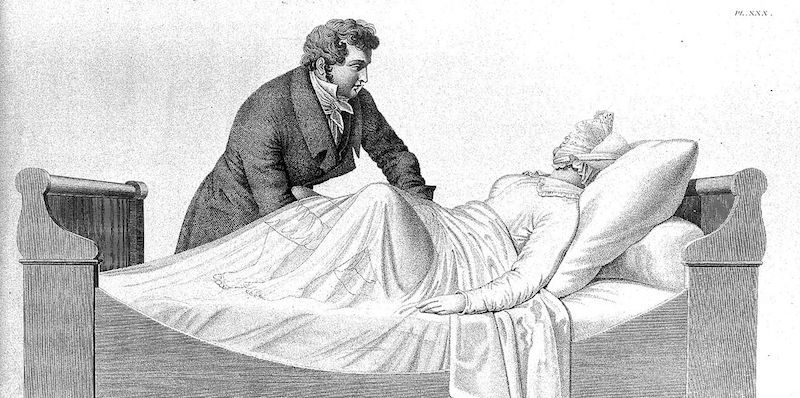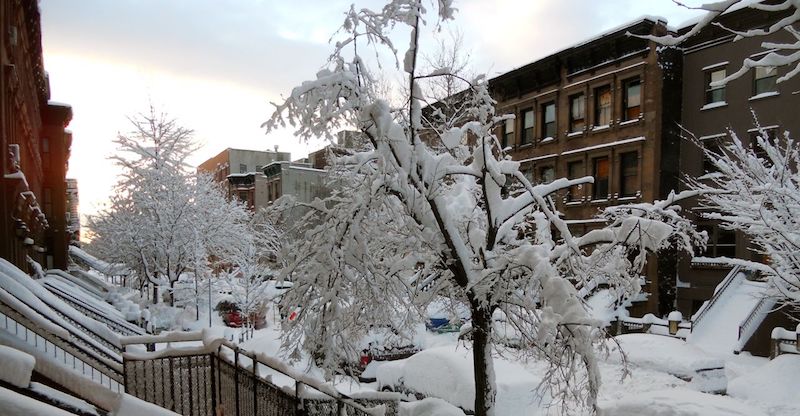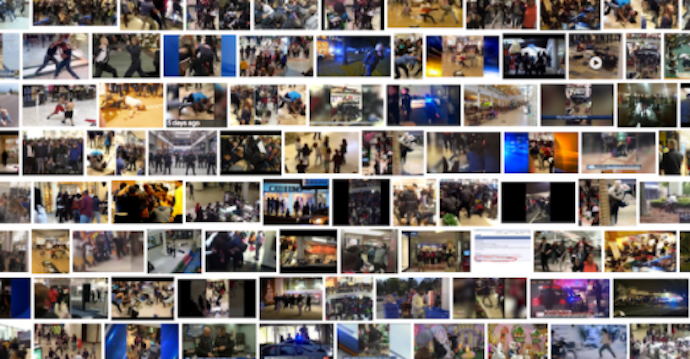
Lit Hub Staff: The Best Essays We Published in Response to Donald Trump
A Look Back at Our Favorite Literary Acts of Resistance
The past year has seen literally thousands of essayistic responses to the election of Donald Trump, an understandable outpouring of witness and grief and blame and analysis in the face of overwhelming evidence that America has a long, long way to go (evidence that some needed more than others). As we wrote shortly after the election, we firmly believe:
. . . the literary is political and, as such, Literary Hub will use its platform (as we have tried to thus far) as a space for bearing witness and calling to action, for testimony and prosecution, for lamentation and, when possible, celebration. A space for the many and wonderful literary voices that make up our real America.
Here a but a few of our favorite voices over the past year.

Hawa Allan, “Confronting the Unreal Under President Trump”
In Hawa Allan’s essay, published just 8 days before Trump’s inauguration, she turns, as the subhead indicates, “to serious thinkers to consider an unserious man.” Those thinkers are Jean Baudrillard, Guy Debord, and Albert Camus—but whatever stuffiness that list of names might connote is eschewed by the essay itself. It’s a sharp look at the way the excesses and rhetoric of Trump conjure the feeling of “a distorted virtual reality” while at the same time representing all-too-real material threats. As Allan writes, “Trump is the curtain pulled back to reveal that there isn’t any wizard. Even so, seeing through a bully’s intimidating exterior doesn’t spare you a black eye.”
–Jess Bergman, Features Editor

Terri Kapsalis, “Hysteria, Witches and The Wandering Uterus: A Brief History“
This essay has a little bit of everything: history, criticism, the story of a personal—and physical—response to Trump’s election. Professor Terri Kapsalis uses Charlotte Perkins Gilman’s The Yellow Wallpaper to delve into the history of hysteria, witch hunts, “crazy girls,” and the continual monster-ization of women by men who would like to see them depowered and tamped down. See: the mania over Hillary Clinton’s health during the 2016 campaign. See: #Hillabeast and #Godhilla and #Witch Hillary. And then, see how insistence on a fictional ailment can create actual ailments—that is, how living in a toxic culture can literally make us sick.
–Emily Temple, Senior Editor

Valeria Luiselli, “This is How the World Ends?”
Writing about the revoking of the DACA, Valeria Luiselli draws a distinction between reaction and action. Feeling and expressing that one is “hurt/worried/ashamed/full-of-guilt” is insufficient—we must move “from a large, noisy and generalized reaction, to the sum of millions of small, individual, more silent but also more concrete actions focused on creating and supporting community bonds” to protect those the administration would harm.
–Blair Beusman, associate editor

Ece Temelhuran, “We Want Our Refugees to be Victims“
“Times of oppression,” Turkish journalist Ece Temelhuran argues in her essay “We Want Our Refugees to Be Victims,” “create the spectacular oppressor,” but they can also create “the spectacular victim” whose suffering defines them utterly to an unsuffering reader. Temelhuran reminds us that the international refugee crisis is a humanitarian one before it is a political one, and offers a stark warning for the future if our humanity continues to fail us. “Where do you take refuge when the entire world decides to become a bully?” she asks, “Who is an exile when all countries become lands of vulgarity?”
–Emily Firetog, Managing Editor
Rebecca Solnit, “The Loneliness of Donald Trump”
In “The Loneliness of Donald Trump” Rebecca Solnit somehow manages to humanize—and to some extent analyze—the man behind the cartoon villain, and comes up with an even bleaker picture than we all imagined:
In the end there is no one else in their world, because when you are not willing to hear how others feel, what others need, when you do not care, you are not willing to acknowledge others’ existence. That’s how it’s lonely at the top. It is as if these petty tyrants live in a world without honest mirrors, without others, without gravity, and they are buffered from the consequences of their failures.
–Jonny Diamond, Editor in Chief

Nathan Goldman, “In the Age of Trump, Reclaiming the Golem as a Symbol of Jewish Resistance”
“In the Age of Trump, Reclaiming the Golem as a Symbol of Jewish Resistance,” Nathan Goldman’s examination of the anti-Semitic rhetoric of Richard Spencer and the Alt-Right, the complex intersection of whiteness and Jewishness in America, and the idea of finding strength and solidarity in Jewish folklore, is a fascinating, and deeply disquieting, look at the chilling return of a force far darker and more threatening than any fairy tale monster:
What does it mean for one of the nation’s most prominent and most watched news channels to broadcast the words IF JEWS ARE PEOPLE for nearly three full minutes? The clause’s conditionality, that minuscule yet monumental if, opens up two paths: Jews are people, or they are not. The very opening of the paths lends legitimacy to each.
–Dan Sheehan, Book Marks Editor

Álvaro Enrigue, “Hope for America on a Snow Day in Harlem”
In the long winter that followed the election, occasions for hope came few and far between. Álvaro Enrigue found one at the season’s end, when a March blizzard hit New York City. His portrait of the Hamilton Heights section of Harlem on a snow day brings to mind Joseph Mitchell and his famous sketches of city life, but also levels a biting critique of the cultural forces that so dominated the year.
I recognize that I tend to the sin of optimism, but since the snow day I’m sure this is their last breath. America is us, we, generous, confused and diverse: folks of every color in the snow. What we are witnessing is the scandalous flash of fireworks that occupy the entire sky; in that moment we can see them just because they are almost gone.
–Dwyer Murphy, Crime Editor
Aleksandar Hemon, “On the Urge to Violence in the Time of Trump“
Lately I’ve been trying to reduce the scale of the Trump debacle so it’s not as… tornadic….so forgive me here for simplifying. But here goes. I find it helpful to me, for whatever time we have remaining with this incompetent bigot as US president, to separate what he does—what policies he enacts, the harm these decisions wreck—with how Trump changes us. On the former, we have some control—protests do help: think about the Muslim ban and the initial wave of resistance. On the latter front—how Trump changes us—we have even more control there. That’s why I love Aleksandar Hemon’s essay about the urge to do violence in this period.
It is a profoundly honest study of the way this administration aerates violence—even for those of us who want to resist it. Hemon describes an altercation he has with a neighbor that moves from a conversation to nearly a fist fight in seconds, so tightly coiled is the spring of anger within Hemon. This interaction speaks volumes to how contagious Trump’s rage is in day-to-day life. Not only is it unpleasant to live this way, though, the rage fumes this administration releases often distract us from where the stress falls most. Throughout the country, for example, there have been staggering drops in the numbers of reported rapes within the last year. In Houston, the New York Times wrote that reported rapes are down among Latinos by forty percent. Given the way this administration speaks of immigrants and Latinos, and their aggressive deportation mandates, it’s no surprise why those communities are not turning to the police. We are going to need more than violence to address this kind of violence. And essays like Hemon’s help us identify the loop that we are often caught in; they let us known we’re not alone in feeling so angry, and they free us up to direct our attention and energy to where it’s needed most.
–John Freeman, Executive Editor





















